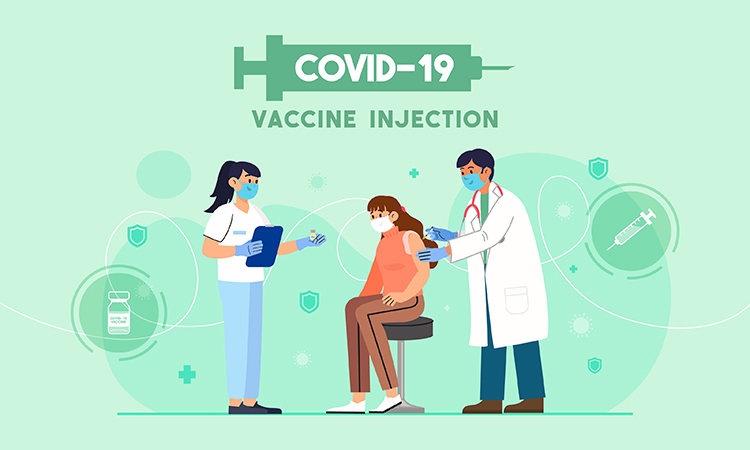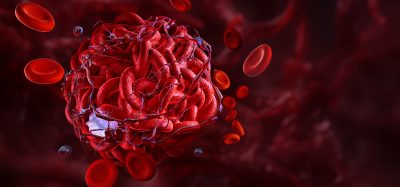The legacy of COVID in vaccine research
Posted: 16 May 2022 | Dr Owen Seddon (University Hospital of Wales) | No comments yet
Dr Owen Seddon, University Hospital of Wales, looks at how lessons learned during the pandemic can inform pre-clinical and early R&D phases of future vaccine work.


The speed at which scientists moved from producing the first viral genetic sequence of SARS-CoV-2 to global vaccine delivery took the world by storm.
Clearly, a unique set of circumstances combined to expedite production of the COVID-19 vaccine to such an extent, as this once-in-a-generation crisis saw unprecedented action to resolve it. “Learning the lessons” has become a key mantra with a desire to apply such swift problem solving to wider medical research.
With the eyes of the world now opened to the reality of future public health crises and infectious disease threats, there is also renewed appreciation of vaccination as a powerful tool with which to combat them. Additionally, the success of the vaccine rollout shows evidence of a tangible outcome if the same level of innovation can be repeated.
Clearing the way for COVID-19 vaccine R&D
Like all other research endeavours, adequate funding is the first stumbling block. Vaccine research struggles to obtain funding from the pharmaceutical industry as the process comes with a high chance of failure and therefore financial risk, making other options more attractive to the private sector.
Striking a balance between public and private funding, normalising the processes of real-world safety monitoring and data collection around immune responses and speeding up key regulatory steps must be brought into consideration for future vaccine research”
Previous attempts at improving co-operation in vaccine development include the creation of The Coalition for Epidemic Preparedness Innovations (CEPI) at Davos in 2017, partly as a solution to the difficulties faced in the development of the Ebola vaccine,1 with the aim of co-ordinating an international and intergovernmental strategy for the development and deployment of new vaccines.
The pandemic showed that a mixed model of public and private sector funding effectively reduced this risk and enabled “big pharma” to satisfy its shareholders that investment was justified. From the perspective of the public sector, the benefit of navigating a way out of the pandemic clearly justified the expenditure and with the involvement of industry came the expertise and infrastructure with regards to efficacy trials and scaling up manufacturing.
What can be replicated in the COVID-19 vaccine development process?
The nature of this multi-agency effort made it possible for several candidate vaccines to be developed and tested at the same time, which greatly increased the possibility of success within a shorter turnaround. Emergency regulatory mechanisms were also crucial in helping speed up the COVID-19 vaccine development process,2 while there was no less scrutiny placed on vaccine candidates in their regulatory review.
Enabling post-hoc collection of data and a commitment from manufacturers to ongoing safety monitoring are two aspects that could be replicated. The pandemic has been the “coming of age” of messenger RNA (mRNA) as a vaccine modality, with years of prior development aligning with an ideal opportunity for its use.3
mRNA technology offers hope for a paradigm shift in vaccinology, as candidate vaccines can be produced extremely quickly, making large-scale manufacturing more cost effective, partly due to the ability to produce vaccines against different targets from the same manufacturing centre.
Finally, a side benefit of large-scale vaccine efficacy studies has been a wealth of new data generated on human immunity and vaccine response, with the hope that this learning might translate into an acceleration of vaccine development for other infections.
What cannot be replicated in the vaccine development process?
Inarguably, factors unique to the pandemic are unlikely to be replicated for other vaccine research. Pharmaceutical interest was piqued by a novel disease with no existing products with which to compete and an enormous potential global market.
Data was easily generated by the extraordinarily high infection rates and incidence worldwide and a motivated population and governments faced by a disease with a high mortality.
These incentives might not exist for other infectious diseases outside of a future pandemic, but other potentially vaccine preventable infections are still worthy of attention on a global level and our scientific community have the responsibility to drive home to governments and industry that broader factors than market size must be considered as an incentive.
COVID-19 workforce
COVID-19 has mobilised a large workforce of individuals from across a spectrum of backgrounds and given them training pertinent to infectious diseases. It would be catastrophic if these newly acquired laboratory competencies and scientific interest were lost as the post COVID-19 workforce landscape alters.
Our local laboratory, by way of example, swelled its workforce by 300 percent and while this was clearly a surge response which will not be sustained, we have generated a workforce with potential for vaccine R&D equipped with laboratory skills and virology training, who must be channelled into programmes where these skills can be utilised.
Looking to the future
Vaccine development in the post-pandemic world needs to focus on the triple threats of infectious diseases. These include those with epidemic or pandemic potential, including influenza and coronaviruses, high consequence infectious diseases with high mortality including viral haemorrhagic fevers, as well as the threat of antimicrobial resistance (AMR), which is predicted to lead to 10 million deaths by 2050.4
The World Health Organization (WHO) action plan puts emphasis on vaccination as an important action in the fight against AMR, because of its ability to target both infectious diseases requiring antimicrobials; and respiratory viral infections, which are often inappropriately treated with antibiotics, and which can also give rise to secondary infections that then require antibiotic treatment.
Lessons learned will advance the cause
There are aspects of vaccine R&D specific to the COVID-19 response which are unlikely to be replicated outside of a future pandemic scenario. However there are other aspects which can and must be applied to pre-clinical vaccine research moving forwards.
Hesitancy in taking up vaccines must also be addressed, including by combating misinformation wherever it can be found”
Striking a balance between public and private funding, normalising the processes of real-world safety monitoring and data collection around immune responses and speeding up key regulatory steps must be brought into consideration for future vaccine research.
Hesitancy in taking up vaccines must also be addressed, including by combating misinformation wherever it can be found. Strong public health messages about the safety of the vaccines swiftly followed the accelerated timescales for their development, but they were not enough to avoid mistruths and vaccine hesitancy in pockets of the population.
By extending public awareness campaigns, increasing education and engagement with hard-to-reach communities and making ongoing public health information visible and accessible to all, the chances of turning effective vaccines into effective vaccinations is greatly increased.
The threat of infectious diseases and antimicrobial resistance have never been more alive in the public consciousness, giving us a once in a generation opportunity to ward off future threats and promote the investment of both finances, personnel and effort into vaccine R&D which can benefit the world.
About the author
Dr Owen Seddon is Programme Leader for the Infectious Diseases MSc at postgraduate education provider Learna, as well as a Consultant in Infectious Diseases and Medical Microbiology for Public Health Wales, based at the University Hospital of Wales, Cardiff.
Having trained in both Wales and New Zealand, Dr Seddon contributes to a busy clinical infection service covering the region, runs the OPAT (outpatient parenteral antibiotic therapy) service for Cardiff and the Vale, and contributed heavily to the COVID-19 response both clinically and strategically.
References
- Henao-Restrepo AM, Camacho A, Longini IM, Watson CH, Edmunds WJ, Egger M, Carroll MW, Dean NE, Diatta I, Doumbia M, Draguez B. Efficacy and effectiveness of an rVSV-vectored vaccine in preventing Ebola virus disease: final results from the Guinea ring vaccination, open-label, cluster-randomised trial (Ebola Ça Suffit!). The Lancet. 2017 Feb 4;389(10068):505-18.
- Singh JA, Upshur RE. The granting of emergency use designation to COVID-19 candidate vaccines: implications for COVID-19 vaccine trials. The Lancet Infectious Diseases. 2021 Apr 1;21(4):e103-9.
- Pardi N, Hogan MJ, Porter FW, Weissman D. mRNA vaccines—a new era in vaccinology. Nature reviews Drug discovery. 2018 Apr;17(4):261-79
- World Health Organization. Global action plan on antimicrobial resistance. 2015. World Health Organization. https://apps.who.int/iris/handle/10665/193736
Related topics
Biopharmaceuticals, Research & Development, Vaccine
Related conditions
Covid-19







